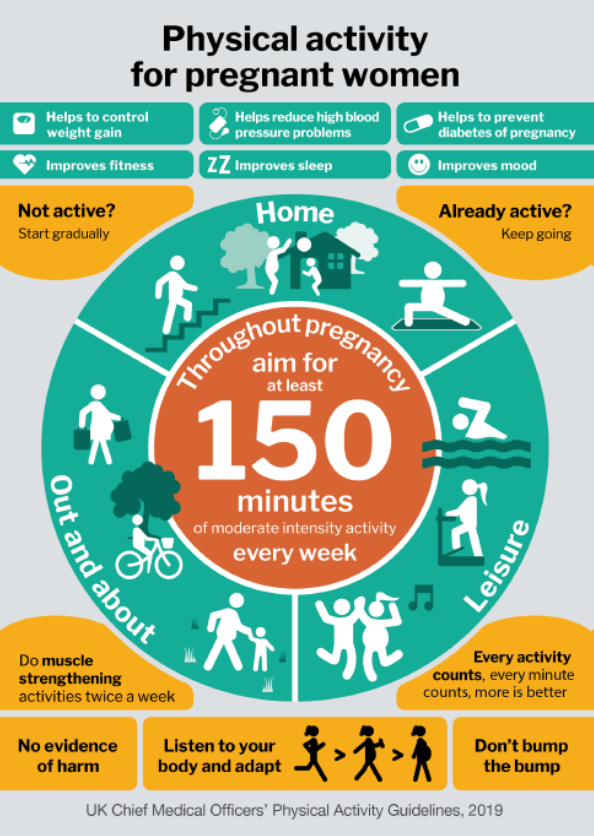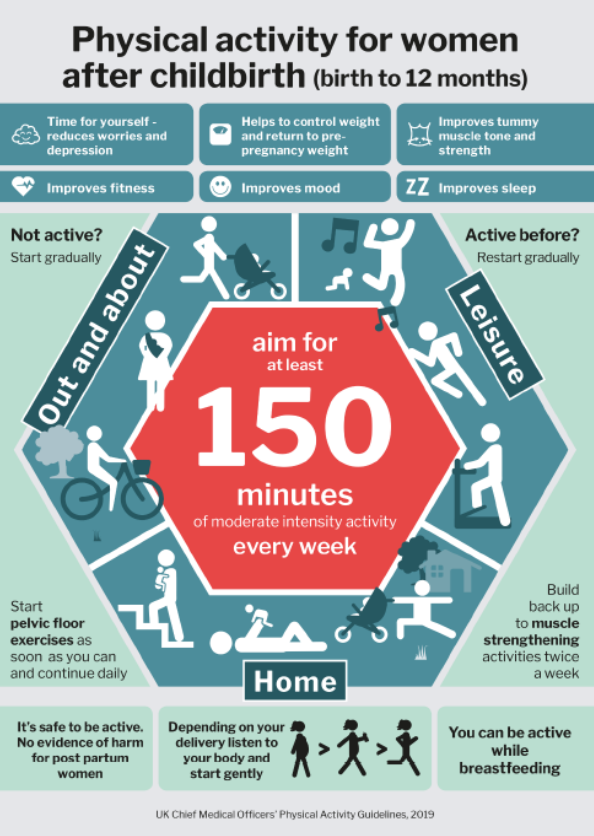 Dr Zhong Eric Chen, Reproductive Health Researcher and Fitness Instructor is a member of the Healthier Pregnancies, Better Lives steering group. His blog tackles the importance of physical activity in relation to pregnancy and pre-conception health.
Dr Zhong Eric Chen, Reproductive Health Researcher and Fitness Instructor is a member of the Healthier Pregnancies, Better Lives steering group. His blog tackles the importance of physical activity in relation to pregnancy and pre-conception health.
In writing my first-ever blog, I acknowledge the possible sensitivity in talking about physical activity, weight, (in)fertility, pregnancies, and bodies. Where possible, I’ve used inclusive language and am mindful of the often heteronormative framing of pregnancy, parenthood and the life course. Published research on the topic is predominantly about women who still identify with the gender assigned at birth. There remains much to understand about the lived experience of other populations with regards to preconception care.
That said, let’s start with some definitions. I’m a researcher after all.
Physical activity and exercise, what’s the difference?
Physical activity and exercise are typically used synonymously however, there is a distinction between the two:
- Physical activity refers to any movement produced by skeletal muscles of the body through the expenditure of energy.
- Exercise is a subset of physical activities and describes a planned, structured, repetitive, and conscious movement, often with the goal of maintaining or improving physical fitness.
A corresponding term to consider is sedentary behaviour/lifestyle, which describes physical inactivity. A sedentary lifestyle has been shown to be an important determinant of health and wellbeing throughout the life course. What this means in practice is that we should move regularly to avoid being in one position (e.g., seated or lying or standing still) for an extended period.
How much physical activity is recommended for good health?
The UK Chief Medical Officer’s Physical Activity Guideline provides clear recommendations on the amount and type/intensity of physical activity for good health, adjusted to take account for the physiological, biological, or psychological realities of specific individuals. Below you will find infographics summarising the recommendations for adults and older adults, pregnant women, and women after childbirth (birth to 12 months).



Things get a bit more complicated when you then think about WHO we include as relevant to preconception. From a research perspective, there is, not an agreed definition of ‘preconception’ and subsequently who the ‘preconception population’ refers to. Broadly, the criteria relate to whether a pregnancy is ‘planned/unplanned,’ ‘intended/unintended’, ‘desired/undesired’, ‘timed/ mistimed’; these terms have been subject of much discussion and debate in research and practice, including in my own PhD on fertility decision-making in Scotland.
What follows is my perspective as a reproductive biologist and reproductive health researcher. The people for whom preconception health, education and care are important includes any individual who fulfils three criteria:
- has the potential for fertility (i.e., is capable of creating a pregnancy).
- lives in circumstances where conception may occur.
- understands how to, and has access to methods that, prevent conception or pregnancy.
Many pregnancies are unplanned or mistimed at the point of conception. Some of these are continued. If we are concerned with healthier lifestyle choices prior to pregnancy, then we need to include the widest possible population. People have different roles and face different possibilities during preconception. For example, which could be supporting individuals/couples to conceive and achieve healthy pregnancies or helping them act effectively on their choice to prevent or delay pregnancy.
How does physical activity support healthier pregnancies and better lives?
Studies have demonstrated the links between physical activity and better outcomes for conception, pregnancy, the pregnant person, and their child. A 2020 review of literature summarised the key roles of physical activity in preconception health in the following areas:
- Infertility and assisted reproduction. Infertility is defined as not being able to conceive after at least one year of unprotected sex. Evidence suggests that moderate and regular physical activity can improve fertility and outcomes of assisted reproductive therapy.
- Polycystic ovary syndrome (PCOS) is estimated to affect as much as 12-18% of reproductive aged women, PCOS is a leading cause of anovulatory infertility (where the egg is not released, and conception is unable to occur). Physical activity as part of lifestyle change is recommended as first line intervention for the management of PCOS and its symptoms.
- Wellbeing, mental health, and quality of life. Appropriate, safe, regular physical activity has been associated with improvements in mood, self-efficacy, symptoms of anxiety and depression and quality of life.
- Weight gain prevention, weight loss and prevention of weight regain. The review article notes the limited effectiveness of physical activity alone in supporting sustained weight loss. It advocates the combination of increasing expenditure of calories through increased physical activity with a reduction in intake of calories through healthy eating.
Maintaining general good health and wellbeing through physical activity (and reduction of sedentary behaviours), as well as healthy eating, should be standard advice as part of effective preconception education, counselling, and care.
How do we help individuals engage in physical activity pre-pregnancy (and in general)?
A 2021 systematic review looked at the enablers and barriers to women’s lifestyle behaviour change during the preconception period. It noted that only 20% of women in these studies knew about the importance of physical activity during preconception period. The lack of knowledge and understanding posed a barrier to the majority of women. The evidence also noted that beliefs about the positive impact of regular physical activity on healthy pregnancy and birth outcomes provided the enabling motivation to make such a lifestyle change.
I think a big part of the challenge stems from the language and communications used today. For instance:
- An outdated emphasis on ‘exercise’ rather than ‘physical activity’ for good health.
- Lack of consistent and clear information given about physical activity in the preconception and interconception period. The general lack of support to women who experience pregnancy loss is also something to be mindful of here.
- Continuing to link physical activity to weight control, instead of highlighting its inherent virtues. Evidence suggests that weight stigma may be a common experience in preconception, pregnancy, and postpartum periods. It can be challenging to motivate individuals to consider the benefit of physical activity if feeling stigmatised, embarrassed, or shamed.
Here are some of my practical suggestions, as a physical activity coach and researcher:
- Update the use of language, distinguishing between ‘physical activity’ and ‘exercise’ with an emphasis on engaging in physical activity in everyday life.
- Identify bespoke opportunities for individuals to engage in physical activity consistent with their age and characteristics. This should involve improved communications and conversations, from primary care to public health.
- Help healthcare professionals minimise stigma and instead support positive behaviour change to safely overcome a sedentary lifestyle.
- Encourage individuals to take part in more physical activities, including exercise and sports that they enjoy or would like to try. Joining national challenges, doing activities with other people, and using fitness tracking apps and devices can be an effective way to engage individuals in sustaining a behaviour change.
This is not an impossible challenge. We can make a real and lasting difference to the lives of prospective parents – and the lives of their children – by moving forward and promoting physical activity as a key factor in providing good preconception health.